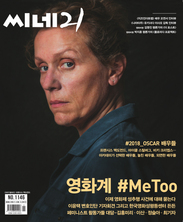지난 20년 동안 영화제의 세계에서 변한 것이 너무 많다! 1986년 봄, 당시 동아시아의 주요 영화제였던 홍콩국제영화제는 10주년 이벤트를 기획했으나 결코 특별한 축전으로 여겨지지 않았다. 영화제 코디네이터 앨버트 리는 공식 카탈로그의 짧은 서문에서 다음과 같이 간단히 언급했다. “짧은 기간 내에 작은 규모의 지역영화상영회에서 국내 영화팬과 해외 비평가들의 탄탄한 지지를 받으며 국제적인 문화행사로 성장했다.”
제10회 홍콩국제영화제는 6개의 상영관에서 장편영화 120편- 비아시아권 영화 53편과 (임권택 감독의 <길소뜸>을 포함한) 아시아영화 22편, 홍콩에서 제작된 당해 5편, 회고전 영화 25편이 상영됐다. 10주년을 기념하는 특별 행사라고는 과거 10년 동안 홍콩에서 제작된 주요 영화 15편의 회고전밖에 없었다.
그로부터 20년 뒤, 현재 동아시아의 주요 영화제가 된 부산국제영화제는 10주년 행사를 무대에 올리면서 확실히 특별한 기념의 행사로 다루었다. 그런데 통계가 얼마나 달라졌는지 한번 살펴보자. 제10회 부산영화제는 31개관이라는 어머어마한 수의 상영관에서 장편 220편- 비아시아권 영화 98편, 아시아영화 95편, 지난해 한국에서 제작된 19편, 그리고 한국 회고전 영화 10편을 상영했다.
10회보다는 50회가 되어야 크게 축하할 만한 이유가 된다 생각하는 몇몇의 서구 게스트들은 부산영화제가 왜 이렇게 기념행사를 크게 벌이는지 의아해했다. 이유는 지난 20년간 변화해온 영화제 역학에 있다.
전세계적으로 행사가 점점 늘어나면서, 영화제들은 현재 그 어느 때보다 영화제의 위상, 상영작, 프리미어 그리고 돈을 위해 더 힘들게 싸워야만 하는 상황이다. 이젠 어떤 기념제든 영화제의 위상을 올리고 정부지원과 기업 스폰서를 얻기에 좋은 핑계를 제공한다. 게다가 부산영화제 사무국에서나 한국의 영화업계에서나 좋은 시절은 내일 당장에라도 끝날 수 있다는 느낌이 여전히 감지된다.
홍콩영화제가 10주년에 이르렀을 때는 이미 최고의 시절이 끝나가고 있을 때였다. 서구 영화제들은 약삭빠르게 동아시아영화를 가져가기 시작했고, 몇년 지나지 않아 홍콩영화제는 중국과 홍콩의 주요 영화들을 발견하는 중심지로서의 위치를 잃었다(홍콩영화제에서 결코 뉴웨이브 대만영화를 발견할 수는 없었던 것이 1987년까지는 베이징의 정치적 압력 때문에 홍콩영화제에서 대만영화를 상영하지 않았기 때문이다).
부산영화제는 이미 몇년 전 한국영화에 대한 특별한 포지셔닝을 잃었고, 2003년 이후에 메이저급 한국영화를 월드 프리미어한 일도 없었다. 그렇지만 국내영화의 제작량과 활기가 계속 이어지는 덕분에 외국 비평가들과 영화제 스카우트를 계속해서 끌어올 만한 새로운 영화들이- 아직까지는- 충분하다.
이런 것을 인식하듯, 부산영화제는 10주년을 활용해서 또 다른 전선에서 자신을 확립했다. 즉, 비평적으로 그리고 전문적으로 그렇게 한 것이다. ‘PIFF가 추천하는 아시아 걸작선’과 ‘아시아 작가영화의 새 지도 그리기’ 섹션은 부산이 아시아 비평의 중심으로 자신을 수립하기 위한 전략의 첫타였다. 비록 적어도 한명의 이름- 인도네시아의 테그 카리야 감독은 1983년 홍콩영화제에서 처음으로 발견한 감독이긴 했지만 말이다. 전문적인 측면에서 보자면, 유러피언 필름 프로모션 네트워크를 모델로 삼은 AFIN(Asian Film Industry Network)의 출범과 내년부터 개최될 영화마켓에 대한 발표는 부산영화제와 한국을 지역의 주동자로 확립하려는 것이었다.
10년이란 기간은 어느 영화업계의 역사에서든 긴 것이다. 그리고 영화제가 부상하고 혁신을 내세우는 데 처음 10년이 대체적으로 가장 쉬운 기간이다. 영화제뿐만 아니라 국내 산업에서도 2015년의 부산영화제가 더욱더 의미심장한 기념이 될 것이다.
How things have changed in the world of film festivals during the past 20 years!
In spring 1986, the Hong Kong Intl. Film Festival - then East Asia's major event - staged its 10th event, but hardly regarded the anniversary as a special occasion. A brief foreword in the official catalogue, by festival co-ordinator Albert Lee, simply noted that "within such a short time, it has grown from a small-scale, regional film exhibition to an international cultural event, supported locally by filmgoers and overseas by critics."
Using six screens, HKIFF's 10th edition contained 120 feature-length movies - 53 non-Asian, 22 Asian (including Im Kwon-taek's "Gilsoddom"), five from Hong Kong production of the past year, and 25 in retrospectives. Its only concession to a special birthday was a 15-title retro of key Hong Kong productions of the past decade.
Twenty years later, PIFF - now East Asia's major event - staged its 10th event, and most definitely regarded the anniversary as a special occasion. But look how the numbers have changed. Using a massive 31 screens, PIFF's 10th edition contained over 220 features - 98 non-Asian, 95 Asian, 19 from the past year's local production, and 10 in its Korean retrospective.
Several western guests, for whom 50 rather than 10 is more a reason for major celebration, wondered why PIFF was making such a big deal of this birthday. The answer lies in changing festival dynamics over the past two decades.
With more events worldwide, festivals now have to fight harder than ever for profile, movies, premieres and money. Any anniversary is now a good reason to raise that profile and provide a good excuse for extra government support and commercial sponsorship. And there's still a perceptible feeling both at PIFF headquarters and in the South Korean industry as a whole that the good times could end tomorrow.
When HKIFF reached 10, its best years were almost over. Western festivals were getting smart over East Asian cinema, and within a few years HKIFF had lost its position as the main place to discover major Chinese and Hong Kong movies. (HKIFF was never a place to discover New Taiwan Cinema as, until 1987, it never showed any Taiwanese films, due to political pressure from Beijing.)
PIFF lost its special position for South Korean movies several years ago, and since 2003 has world premiered no major local titles. But thanks to the continuing vitality and quantity of local production, there's still enough new movies - for the time being - to continue drawing foreign critics and scouts.
Seemingly aware of this, PIFF used its 10th birthday to establish itself on other fronts - both critically and professionally. Its "Asian Pantheon" and "Remapping of Asian Auteur Cinema" sections were first shots in its battle to establish itself as an Asian critical hub, though at least one name, Indonesian director Teguh Karya, was first "discovered" by HKIFF in 1983. On the professional side, the launch of the Asian Film Industry Network (modelled on the European Film Promotion network) and announcement of a film market from next year seek to establish PIFF and South Korea as a prime regional mover.
Ten years is a long time in any film industry's history, and the first 10 years are often the easiest in any film festival's innovation and rise. PIFF 2015 will be an even more significant birthday - for the festival as well as the local industry.


